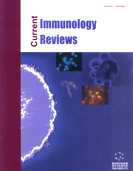Abstract
Insect immune systems which lack the type of adaptive immunity known in vertebrates rely on several mechanisms including solid barriers against the environment, rapid coagulation of hemolymph after wounding, the formation of aggregates that immobilize and kill foreign invaders, phagocytosis, and the production of antimicrobial peptides. The mode of action and the regulation of the expression of antimicrobial peptides have been studied intensively for more than three decades and are now increasingly well understood. In addition, the characterization of several key molecules involved in other branches of insect immunity has led to a deeper and much more comprehensive understanding of innate immunity in insects. Here we focus on the current status of our view of immunity in the vinegar fly Drosophila melanogaster, the best characterized insect model. We also discuss how evolutionary and ecological forces may have shaped immune responses in Drosophila as compared to other insect species. Finally, several infection models reveal finely-tuned and pathogen-dependent interactions between Drosophila immunity and fly physiology.
Keywords: Innate immunity, hemocytes, encapsulation, phagocytosis, phenoloxidase, coagulation
 6
6

